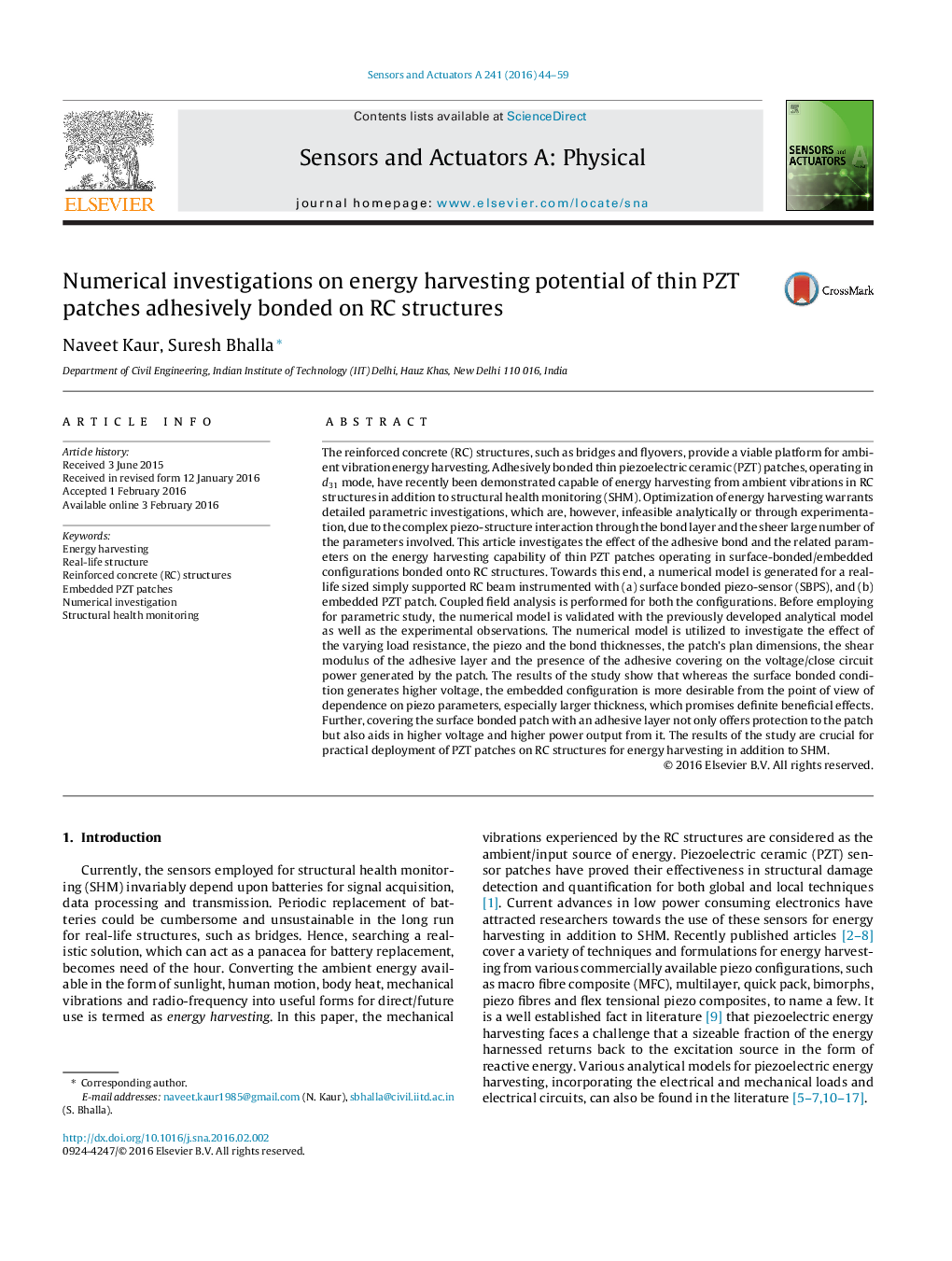| Article ID | Journal | Published Year | Pages | File Type |
|---|---|---|---|---|
| 736607 | Sensors and Actuators A: Physical | 2016 | 16 Pages |
•PZT patch bonded to real-life sized RC beam in surface bonded & embedded configuration.•Numerical investigation of effect of adhesive and piezo parameters on piezoelectric energy.•Validation of numerical results with existing analytical model & experimental data.•Surface bonded configuration generates higher voltage than embedded configuration.•Adhesive layer cover on surface bonded patch aids in higher voltage & power output.
The reinforced concrete (RC) structures, such as bridges and flyovers, provide a viable platform for ambient vibration energy harvesting. Adhesively bonded thin piezoelectric ceramic (PZT) patches, operating in d31 mode, have recently been demonstrated capable of energy harvesting from ambient vibrations in RC structures in addition to structural health monitoring (SHM). Optimization of energy harvesting warrants detailed parametric investigations, which are, however, infeasible analytically or through experimentation, due to the complex piezo-structure interaction through the bond layer and the sheer large number of the parameters involved. This article investigates the effect of the adhesive bond and the related parameters on the energy harvesting capability of thin PZT patches operating in surface-bonded/embedded configurations bonded onto RC structures. Towards this end, a numerical model is generated for a real-life sized simply supported RC beam instrumented with (a) surface bonded piezo-sensor (SBPS), and (b) embedded PZT patch. Coupled field analysis is performed for both the configurations. Before employing for parametric study, the numerical model is validated with the previously developed analytical model as well as the experimental observations. The numerical model is utilized to investigate the effect of the varying load resistance, the piezo and the bond thicknesses, the patch’s plan dimensions, the shear modulus of the adhesive layer and the presence of the adhesive covering on the voltage/close circuit power generated by the patch. The results of the study show that whereas the surface bonded condition generates higher voltage, the embedded configuration is more desirable from the point of view of dependence on piezo parameters, especially larger thickness, which promises definite beneficial effects. Further, covering the surface bonded patch with an adhesive layer not only offers protection to the patch but also aids in higher voltage and higher power output from it. The results of the study are crucial for practical deployment of PZT patches on RC structures for energy harvesting in addition to SHM.
